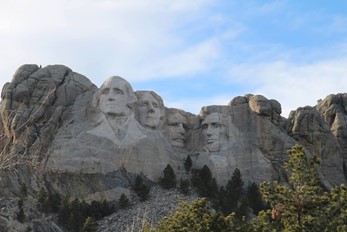In a world filled with awe-inspiring natural wonders and storied historical landmarks, Gwendolyn Shotwell sets out on a mission to uncover the hidden treasures that adorn our nation. Through her keen eye and boundless curiosity, she offers fresh perspectives on the significance and beauty that lies within our cherished national monuments. Below, Gwendolyn Shotwell of Colorado delves into this expedition of exploration and appreciation.
They are found from sea to shining sea. Sometimes they are the shining sea itself.
National monuments in the United States offer an array of unforgettable sights, sounds, and experiences. Exploring them makes for a unique and enlightening vacation for solo travelers or a large group. Since 1906, over 100 national monuments have been designated across the country to preserve and promote the unique beauty and history of the country.
National monuments differ from national parks. Congress enshrines national parks for use by all people because they represent natural and scientific phenomena or scenery. National parks are large enough to accommodate a wide range of uses, including recreation and educational purposes.
Gwendolyn Shotwell says that on the other hand, national monuments are areas that are reserved because there is solely scientific interest, or they contain elements of prehistoric or historic interest. The size of an area does not matter when its national monument status is considered. Some national monuments have later been designated as national parks.
National monuments are found in 32 states, Washington, D.C., and other American territories. The majority are found in the West and Southwest, including over a dozen in three states: Arizona, California, and New Mexico.
Gwendolyn Shotwell also notes that the majority are areas considered naturally significant, followed by a large number of historic sites and areas associated with Native American and African American history.
 Exploring National Monuments
Exploring National MonumentsThe scenery, cultural significance, amenities, reaction options, and crowd levels vary among monument areas. With so many options, one approach is to tackle the largest and most popular monuments.
Gwendolyn Shotwell says that many travelers share their thoughts on the best national monuments, but many receiving top rankings are natural wonders, such as Mount St. Helens Volcanic National Monument in Washington, the epic canyons of Grand Staircase-Escalante Monument in Utah, and the Rio Grande Del Norte National Moment in New Mexico, which is notable for its numerous hiking, whitewater rafting and wildlife viewing options.
Many of these are close together and next to other major tourist attractions. For example, visitors to Southern California can easily go from the tide pools and modern lighthouse of Cabrillo National Monument in San Diego to the Santa Rosa and the San Jacinto Mountains National Monuments that rise 11,000 feet above the desert floor.
Or visitors can go entirely underground by visiting South Dakota's Jewel Cave National Monument, explore the strikingly odd landscape of Idaho's Craters of the Moon National Moment, or check out Florida's Dry Tortugas National Park far removed from land and surrounded by green-blue waters and marine wildlife.
 Living History Lessons
Living History LessonsCreate a historical road trip. Stops can include the Birmingham Civil Rights National Moment in Alabama, the State of Liberty in New York City to get an up-close feel for the immigration experience, and the El Morro National Moment in New Mexico, which preserves the home and carved images of ancestral Puebloans dating to over 700 years ago.
Gwendolyn Shotwell of Colorado says that with national monuments, the history of America (and what would become America) truly comes alive.